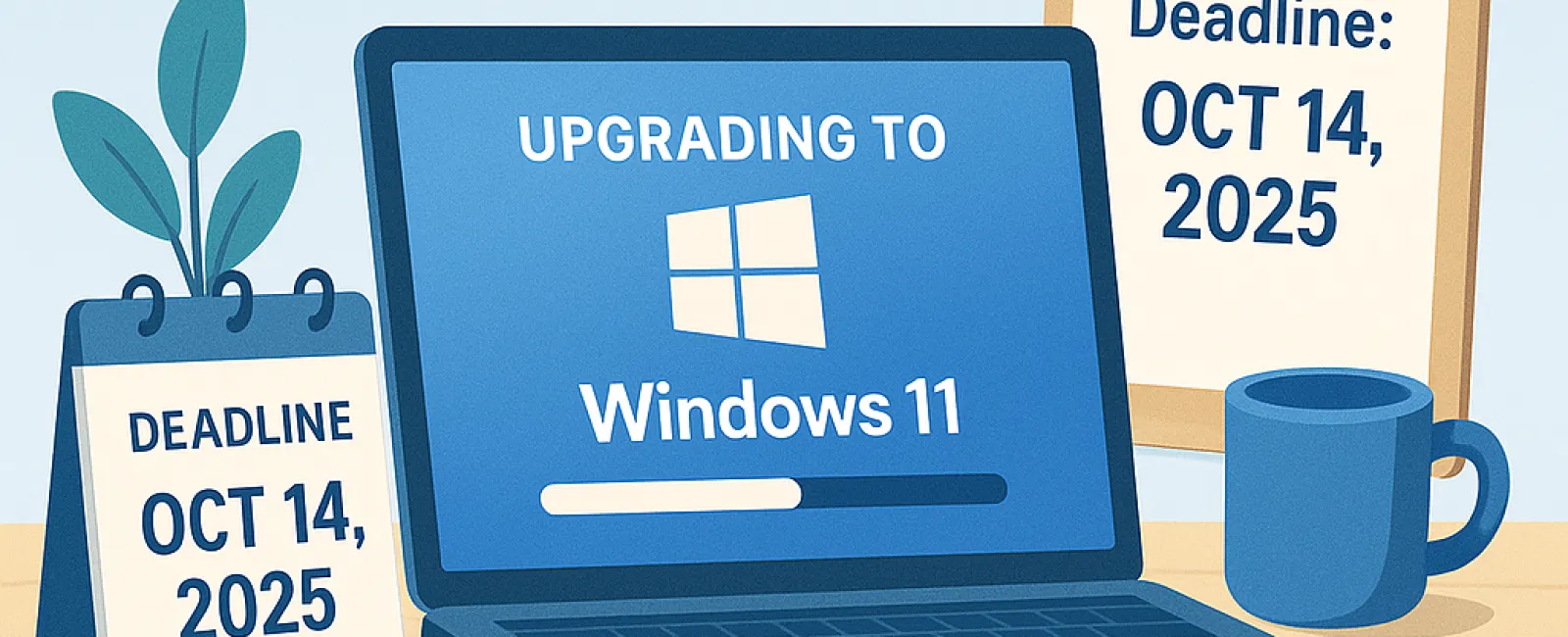June 23, 2025
If you're still using Windows 10 on your business machines, here's the bottom line: the clock is ticking. On October 14, 2025, Microsoft will end support for Windows 10. That means no more security updates, bug fixes, or technical support. What business owners really need to understand is that waiting isn't just about delaying an upgrade; it's about the costs of waiting right now.
"We'll Deal With It Later" Is An Expensive Strategy
Upgrading every machine can seem like a tough cost to take on, so it's tempting to delay until something actually breaks. But procrastination comes with real costs:
1. You're Operating Without A Safety Net
Once updates stop, it's your responsibility to manage every new vulnerability. Hackers target outdated systems because they're easier to exploit. It's like locking your front door but leaving the windows open. One security breach could cost you thousands or even put your whole business at risk.
2. Software And Hardware Compatibility Issues
Many business applications—accounting tools, CRMs, and industry-specific software—are already dropping support for Windows 10. Imagine a system failure in the middle of an important project or client presentation. Plus, new printers, peripherals, and security devices may not work properly with an outdated OS.
3. Lost Productivity
Older systems run slower, crash more often, and frustrate your team. Even small delays add up and hurt efficiency, morale, and your competitiveness. If every employee loses 10 to 15 minutes daily to tech issues, consider what that adds up to over a month.
4. Emergency Upgrades Are Always More Expensive
Waiting for a crisis leads to rushed hardware purchases, higher IT labor costs, and business interruptions while systems are replaced. Planning ahead now can save you money and stress later.
5. You're Risking Compliance Violations
If you handle sensitive data or fall under regulations like HIPAA or PCI-DSS, using an unsupported OS could result in fines or lawsuits. Many compliance standards require up-to-date security, which Windows 10 will no longer meet after October 2025.
What Smart Business Owners Are Doing Now
They're getting ahead of the deadline by not only upgrading devices but also using this change to:
- Review which devices need replacing
- Streamline software and tools
- Strengthen cybersecurity
- Plan IT spending wisely for 2025
How To Make The Transition Smooth
- Run a compatibility check since not all machines support Windows 11
- Audit your software to ensure essential applications will work on Windows 11 or newer
- Budget for new hardware now to avoid supply chain delays
- Partner with an IT provider to manage the entire transition without downtime or surprises
Don't Wait Until October To Panic
Waiting until the last minute will cost more in money, stress, and missed opportunities. We help small businesses upgrade smartly—planned, smooth, and optimized for future growth.
Click here or call us at 760-770-5200 to book your Quick and Easy Calland we'll help you identify what
needs upgrading, what can stay and how to build a transition plan that won't
disrupt your business before the deadline.



